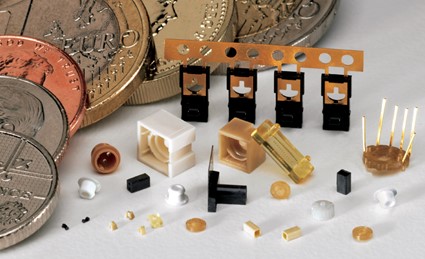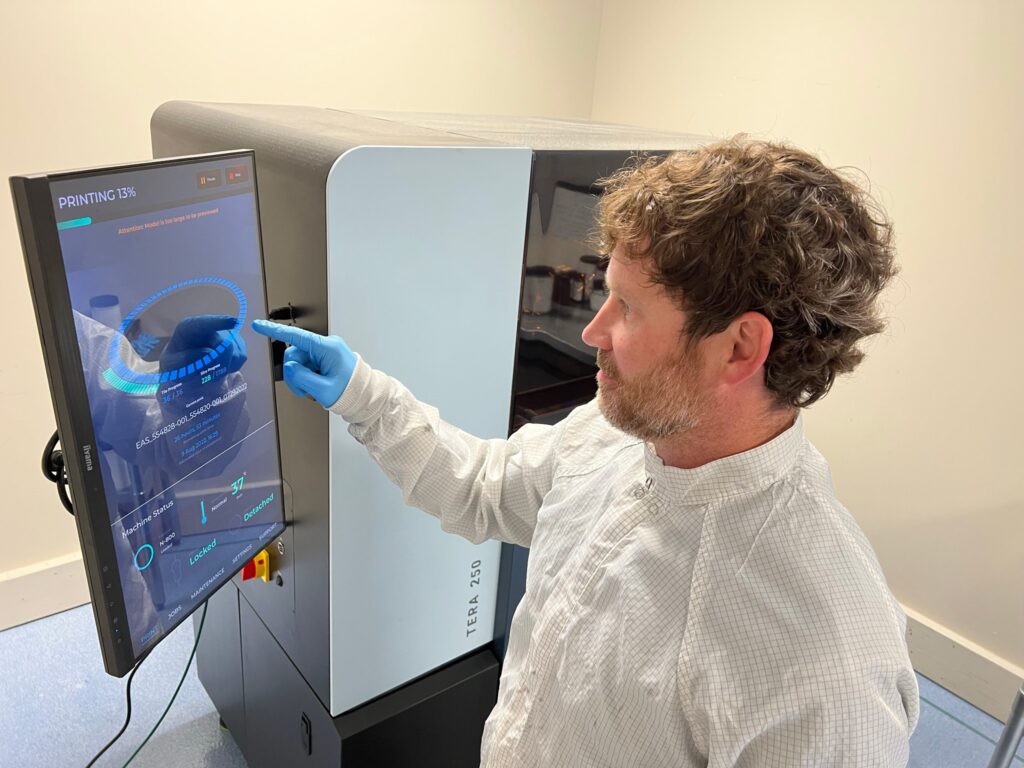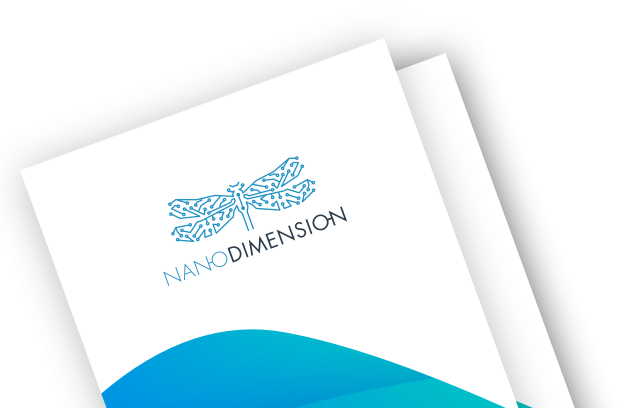Aug 8, 2022
Rewriting the Cost Equation for Micro-Molding

Fabrica 2.0’s additive solution reduces Accumold’s lead time
Few companies in the world share the same capabilities as Accumold, a leader in the art and science of micro-molding. Customers come to Accumold with the industry’s hardest problems: injection molding of the smallest possible plastic components and the greatest detailed complexity within micron tolerances.
In its daily business, Accumold uses the Fabrica 2.0, Nano Dimension’s Micro-AM 3D printer to enhance its traditional injection mold fabrication process. Accumold uses the Fabrica 2.0 to print micro-sized prototype parts and molds to decrease time-to-market for their customers. A close collaboration between Accumold and their customers ensures multiple design iterations can be produced, evaluated, and improved in a short amount of time.

This provides an evidence-based approach to bringing the best possible part design to market sooner. With its long queue of print jobs, “I could already use a second printer,” says Chris Hunt, Accumold’s Additive Manufacturing Manager. Fabrica 2.0 prints high-precision parts directly, without tooling, through additive layers 1- to 5-microns thick.
The value the Fabrica 2.0 system brings to Accumold’s business is that they can now print injection-mold inserts at the resolution necessary for molding micro-sized parts. The time required to print a mold is also much faster than producing a mold via traditional manufacturing methods.
The process of manufacturing a steel injection mold at Accumold involves a series of time-consuming tasks __ CAM programming, CNC setup and machining, EDM, and hand polishing. Depending on the complexity of the part, lead times for just the tooling can take four-six weeks for the design to be ready for production. This initial investment in tooling is often difficult to cost-justify at lower production volumes.
“With the Fabrica 2.0, we can already cater to customers requiring low- to medium-sized runs economically,” explained Roger Hargens, CEO of Accumold. “The same economies of scale do not exist when using AM as opposed to traditional molding technologies.”
Micro-Mold Engineers Love the Idea of 3D Printing
Accumold won’t be eliminating the process of building steel tooling in favor of printing parts directly since it is still the most economical way to produce a large volume of components. According to Sales Engineer Alex Anderson however, Accumold has a more strategic use for micro 3D printing in mind.
Read Our eBook For More Information On Precision Micro Additive Manufacturing
Numerous iterations for testing
Adding 3D printing to Accumold’s design for micro-molding (DfMM) process speeds up the prototyping timeline by allowing quick, in-house iteration. In a recent case involving 3D printing for micro molding, Accumold helped a customer quickly finalize the design of molded valve assembly. This valve was comprised of a softer material over-molded on top of a harder machined insert.
Accumold used the Fabrica 2.0 to print multiple micro-mold tools to mold the prototype assembly. With the help of their in-house tool room and production team, they were able to evaluate three different mold designs and two molding materials in about two weeks. The customer was extremely pleased with the results and was able to move forward ahead of schedule. This amount of design iterations could not have been molded and evaluated in two weeks with traditional tooling.
Prototypes as communication
The real purpose of a prototype is to foster design communication between the manufacturer and client about the final product. In this sense, faster prototyping – and a range of iterated options__ adds clarity and momentum to these discussions.
“The other prototyping advantage is communication. Micro-mold engineers were able to speak with the customer, and simply walk down the hall to go over new plans. This resulted in a new part by the next day,” says Anderson. “Using a prototyping company instead results in three separate entities trying to coordinate, instead of just the micro molder and customer. For any engineering team who has attempted to collaborate on projects via Zoom or the phone, this hands-on approach reduces miscommunication and enhances collaboration.”
In-house 3D printing protects IP
An even bigger concern in prototyping with an outside vendor is a potential loss of intellectual property (IP). In the case of the medical device referenced above, the OEM had developed several innovative designs on its path to solving a particular design challenge.
Because these designs would likely be used in future devices, that introduces a prototyping challenge: Should they try all the designs, risking their IP, or only prototype a few?

“OEMs know the more parties involved, the harder it is to protect their IP,” Anderson says. “This problem is magnified if a prototyping partner is in a country with dissimilar IP laws. For this reason, keeping prototyping in-house is a great solution. It introduces fewer parties, the laws are consistent, and the same NDA applies to the entire process. When prototyping of this nature is kept in-house with the same team that creates the production part, an OEM can create freely, knowing the IP and ideas are locked tight.”
Shrinking prototype timelines is just the beginning
Customers are now recognizing they can beat their competition in time-to-market with micro-AM as part of the process.
Finding a better prototyping process through additive techniques delivers better testing, improves design communication, and removes fears about IP security.
While still an up-and-coming technology, Nano Dimension’s Fabrica 2.0 has the precision and the speed and can match Accumold’s world-class standards. It also means micro-AM has massive room for growth in the micro-mold space. Accumold’s engineers are in discussion with Nano Dimension’s product development team about refinements that would have even more far-reaching effects on DfMM.
“The hugely impressive technology that Fabrica Group has developed will in short order add significant possibilities for us and our customers,” says Hargens.
Stay Updated
Be informed of the future of additive manufacturing &
3D printed electronics
